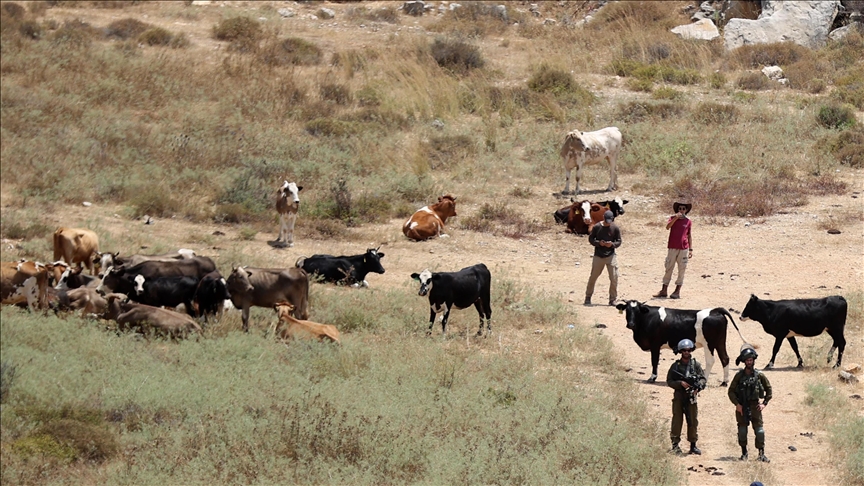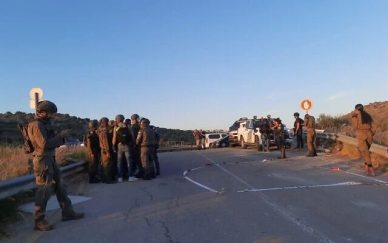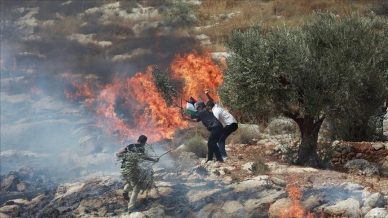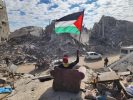AL-KHALIL, (PIC)
The Israeli occupation authorities intend to convert the outpost Adorayim, established on the lands of Dura south of Al-Khalil, into a settlement. This outpost was established in July four years ago and is witnessing significant growth, currently housing 26 settler families.
A settlement is one that is established with the approval of the Israeli occupation government, while outposts are set up by settlers without government approval. The land on which the outpost was built belongs to citizens of Dura, south of Al-Khalil, and was seized by the occupation authorities in the 1970s, leading to the establishment of the military base Adorayim.
Smotrich, a proponent of settlement
Amir Dawood, the Director General of Documentation and Publication at the Wall and Settlement Resistance Commission, states that the decision came in response to a request from the extremist Israeli Finance Minister Bezalel Smotrich to legalize five outposts in the West Bank.
Dawood explains that the new settlement will be able to present plans for building residential units independently, as it will be recognized as a full settlement, rather than just a neighborhood within a settlement, and will have a separate urban code like other cities.
According to statistics from the Wall Resistance Commission in 2024, the number of settlers in the West Bank reached 780,000, including around 310,000 in Jerusalem. Dawood notes that the most prominent aspect of the coalition agreements for the extremist occupation government relates to the expansion of outposts to satisfy the far-right, amid fears that these settlements will solidify the illegal presence of settlers as a fait accompli, undermining the possibility of establishing a Palestinian state in the future through the policy of imposing facts on the ground.
Settler Expansion
Settler activities in agricultural or pastoral forms represent a new face of the process of Judaizing Palestinian land, where settlers take over any Palestinian land they set their eyes on with a herd of sheep or cattle, as if they are its owners or heirs. They then quickly pitch a tent over it or surround it with fencing, attempting to control it—all under the protection of the occupation army.
The settler farms created by settlers to seize areas classified as Area C operate on the principle that a few settlers can seize a large amount of land. The goal is to establish a family or a group of youths in a strategic location for sheep grazing and to set boundaries for those lands, according to a previous report from Yedioth Ahronoth.
Random settlement growth
In a report released on February 25, the Israeli organization Kerem Navot stated that the year 2024 witnessed the establishment of 60 new outposts in the areas of the West Bank, which is equivalent to about one-fifth of all outposts established since 1997, totaling 284 outposts, according to the Zman Yisrael website.
The organization noted that none of the outposts built had received prior or retroactive approval for establishment, unlike previous cases where outposts were legalized retroactively; only two out of the 60 outposts were evacuated.
According to the organization, the acceleration of random settlement construction comes amid the current government’s measures that have expedited planning and construction procedures in the occupied West Bank.
Most of these outposts already have infrastructure, including connections to the Israeli water pipeline, but many host only a small number of settlers. Nevertheless, they occupy large areas and establish infrastructure there, aiming to allow more settlers to access the area in the future.
With the onset of the Israeli genocide against the Gaza Strip, land seizures and confiscations in the West Bank have significantly increased. According to estimates from the Palestinian Wall and Settlement Resistance Commission, the occupation authorities confiscated 27,000 dunums of land in the West Bank during 2024, marking the largest land theft of Palestinian territories in three decades.
Sovereignty imposition plan
At the beginning of 2025, the Israeli ministerial committee for legislation approved a draft law on January 26 that allows settlers to buy and own land in the occupied West Bank. Until now, Israeli settlers could not directly purchase land in the West Bank but had to do so through companies registered in the Civil Administration, after obtaining a permit from it.
The extremist Smotrich views the West Bank, including occupied East Jerusalem, as part of the occupying state and does not hide his strong opposition to the two-state solution. He has pledged to achieve full control over the West Bank by 2025 under the plan called “Imposing Israeli Sovereignty.”
According to estimates from “Peace Now,” more than half a million settlers reside in 147 settlements and 224 outposts in the West Bank, while over 240,000 others live in 15 settlements on lands in occupied East Jerusalem. The Israeli right is betting on former U.S. President Donald Trump’s approval to annex parts of the West Bank to Israel, according to the “Deal of the Century” plan proposed during his previous term.















